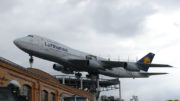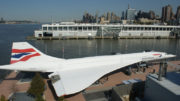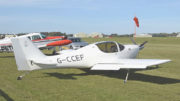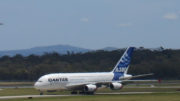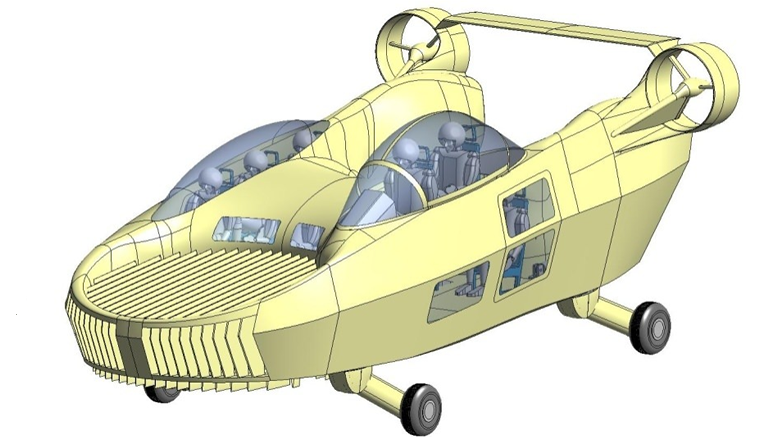 A car shape unique vehicle that has more in common with a helicopter than your passenger sedan is currently under development in Israel. The proposed X-hawk and its prototype the Cityhawk both look like a batman style car but use a patented vane control system that housed two large fans in the front and back of the vehicle. the passenger compartment takes up the space in between.
A car shape unique vehicle that has more in common with a helicopter than your passenger sedan is currently under development in Israel. The proposed X-hawk and its prototype the Cityhawk both look like a batman style car but use a patented vane control system that housed two large fans in the front and back of the vehicle. the passenger compartment takes up the space in between.
The X-Hawk is a ‘rotorless’ Vertical-Take-Off and Landing (VTOL) vehicle. To be more precise, it is a vehicle that has the VTOL capability of a helicopter, but without the exposed rotors that make it dangerous or impossible for helicopters to manoeuvre in complex urban and natural environments.
In spite of its revolutionary appearance and capabilities, X-Hawk is actually rooted in technologies that are proven and have been around for quite some time. The key to the vehicle is in its unique integration of these technologies together with a number of patents that are the result of UrbanAeronautics twenty-five years of experience in the field of vertical takeoff and landing (VTOL). Vehicles known as “Flying Jeeps” that looked very much like X-Hawk were built and flown by the Piasecki Company and the U.S. Army and Navy in the early 60’s. These vehicles proved the basic viability of a ducted, dual-fan configuration but had limitations in controllability and payload capacity that had no technological solutions at the time.
Since the 60’s, computerized flight control technology known as “fly-by-wire” has evolved to a level where aircraft ranging from jumbo passenger jets, to fighter jets and helicopters are largely controlled by on-board computers that simplify the complexity of piloting aircraft. In addition, flyby- wire technology significantly reduces the weight of aircraft by replacing heavy mechanics with electronic controls.
Technological advances that have contributed to “upgrading” the flying jeep concept include advanced composite materials that make the vehicle lighter and stronger and modern turbine engines that are significantly lighter and more powerful than those available in the 60’s.
Moreover, X-Hawk’s modular cargo bay allows for tailor-made, task specific configurations that enable the vehicle to be an all-around workhorse. Some of the most obvious applications include, aerial medical access and evacuation, power-line maintenance, bridge inspection and ship-to-shore taxi service, to name a few.
Contained rotors and compact design allow the vehicle to safely hover and/or land in congested areas without endangering either itself or the environment. The vehicle can even land in a crowd of people without compromising their safety.
The capability to sustain a stable hover while in direct contact with a wall or the side of a mountain makes possible comfortable access to virtually any location, be it the window of a high-rise building in a major city or a remote mountain ridge in the wilderness

